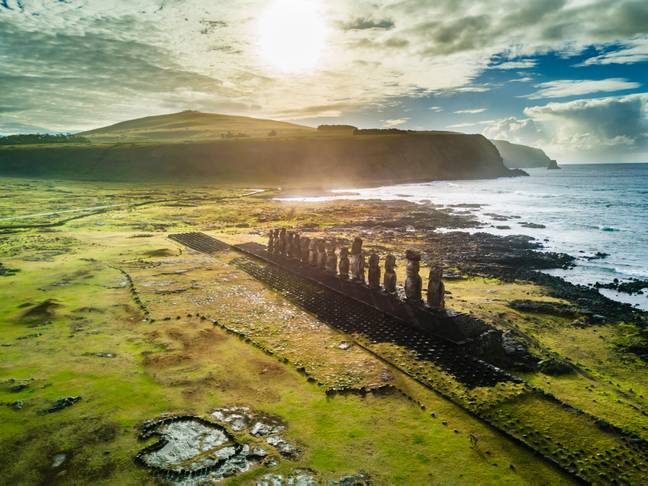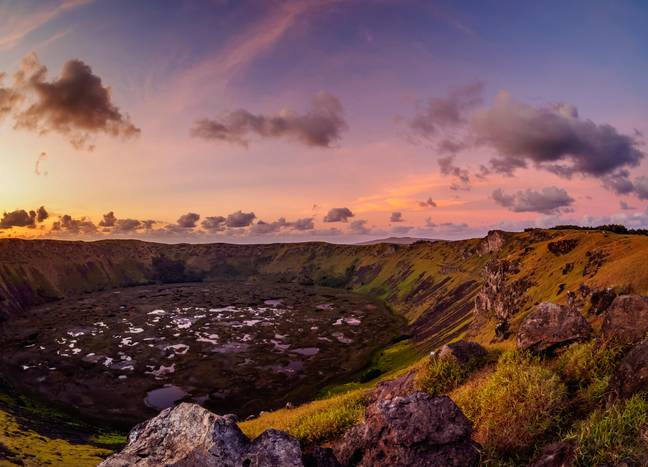Easter Island’s native inhabitants have long remained a mystery for archaeologists, but scientific developments in recent years have begun to shed a light on their rich history.
Located off the coast of Chile, the remote Polynesian island, also known as Rapa Nui, has seen populations of between 15,000 and 20,000 at its peak.
However, for many years baffled scientists have tried to work out how inhabitants maintained their ancient society for centuries with no fresh water supply.
Researchers now believe the reason is connected to the construction of the famous moai statues.
After Europeans first made contact with the Pacific Islanders in the 18th century, it was thought that natives were able to drink seawater without harming their bodies.

We know now that this is impossible. The human body cannot consume high levels of seawater due to the large concentration of salt, so drinking seawater eventually results in death by dehydration.
By 1887, the population of Easter Island had been decimated as a result of slave trading and an outbreak of smallpox, which made it even more difficult for scientists to uncover the truth behind the people’s history.
After a number of scientific investigations were conducted, it was decided that Easter Island does not have a substantial source of freshwater.
Now, this is where the 13-foot moai statues come in, which happen to be situated along the coast.
When it rains on the island, water flows downhill and exits the ground where the rock meets the ocean.
And, when tides are low, this causes freshwater to flow directly into the sea.
The freshwater and saltwater mix to create a liquid with low enough salt levels that it can be safely consumed by humans.

So, the 13-foot moai statues are thought to have enabled early inhabitants to skim freshwater from the surface, build trenches, or create coastal impoundments.
This would have helped the Rapa Nui people survive periods of drought through diversifying their water source.
Although researchers cannot be sure that this is exactly why the native population survived for so long, it is the result of ongoing rigorous archaeological and scientific investigations.
At present, population levels are estimated to be around 7,000.
Changes to the law have made it harder for non-native people to move to the island due to concerns over increases in population size and the negative consequences this may have on the environment.
However, tourists are free to visit the island.
